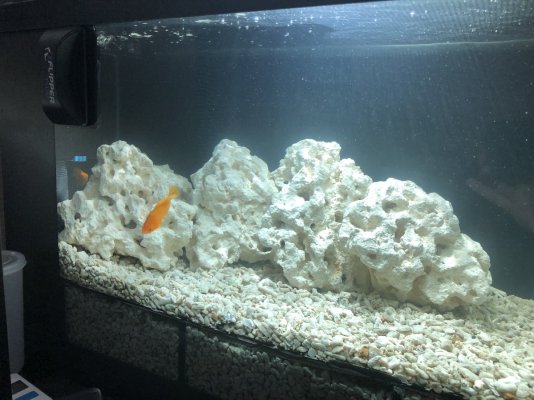Randy Holmes-Farley
Reef Chemist
View Badges
Staff member
Super Moderator
Excellence Award
Expert Contributor
Article Contributor
R2R Research
My Tank Thread
- Joined
- Sep 5, 2014
- Messages
- 67,631
- Reaction score
- 64,091
I´m not sure that I follow you. IMO - More DOC - more consumption of O2. In the sediment DOC increase the bacterial growth and consume O2 in the first step. When O2 is gone att x µm in the biofilm/sediment NO3 start to be consumed instead.. Because DOC is the limited growth factor - it will be rapidly consumed in the interface between water and sediment - no need for diffusing further down. However - your are right - you can´t expect a rapid denitrification in these cases but you will have it sooner or later. This is exactly my point - when you after a certain time note a decrease in NO3 (higher than before) - the most likely reason is denitrification not growth
Edit: By the way - in nitrifying biofilms it had been shown that O2 levels are low already after some µm and heterotrophic bacterial growth are ten fold higher - if there is DOC enough - the O2 will disappear fast.
Sincerely Lasse
What I've always been skeptical of is the need to get all of the three (O2, nitrate, and organic) to the right concentrations in the same place to have a lot of denitrification.
Your statement simply asserts it is happening, but why would there be more organic than O2 diffusing into the region you propose for denitrification. O2 is faster diffusing and is present at higher concentration.
Then one also needs nitrate to diffuse in fast enough to get denitrification. It too will diffuse slower than O2. How does that happen? Maybe just when it is far higher in concentration than O2 in the bulk water.
I'm sure some denitrification does happen, I just do not see the molecular level processes that allow it to be a major pathway.
What evidence exists that denitrification is the major pathway for organic consumption and nitrate reduction in an ordinary reef tank?
Your setup is a very different scenario where you pump things through the plenum.


















